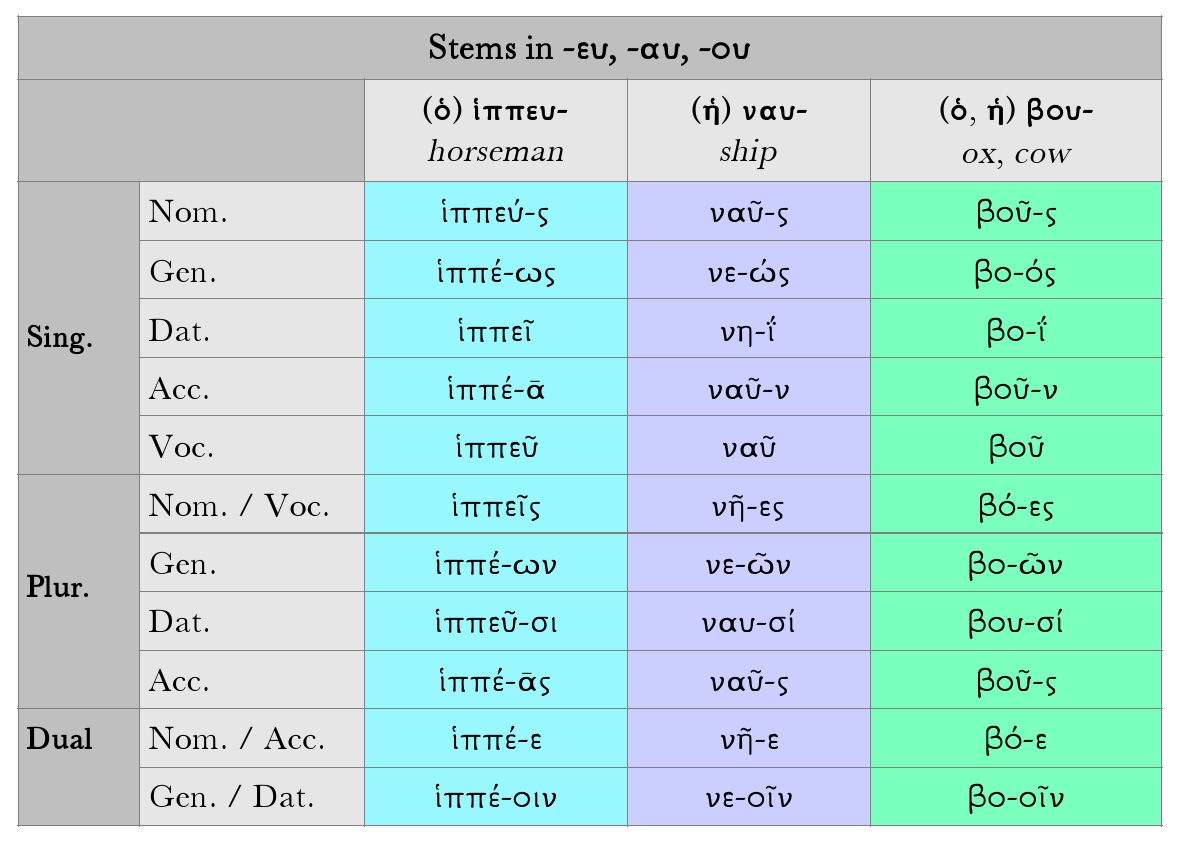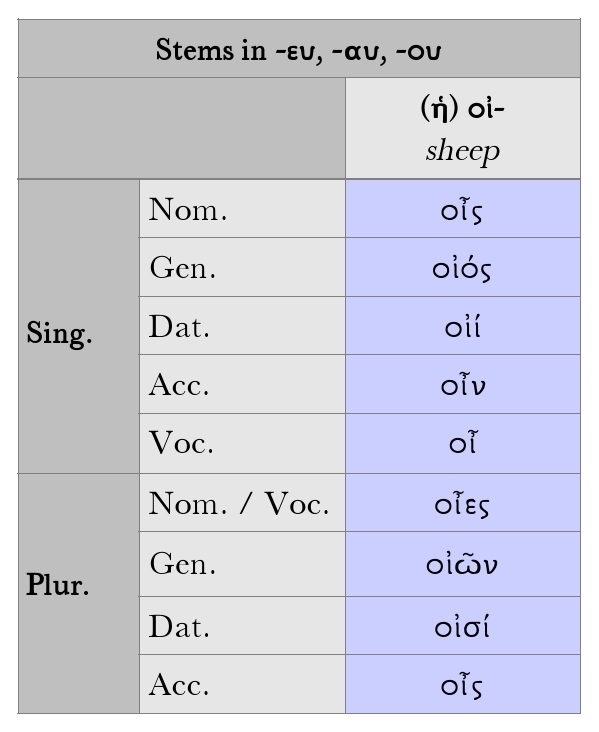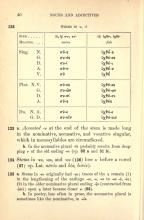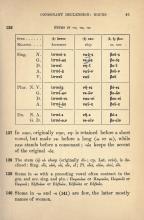134. Stems in -ευ, -αυ, and -ου (§ 136, below) lose υ before a vowel (§ 27; cp. Latin nāvis and bōs, bovis).
135. a. Stems in -ευ originally had -ηυ; traces of the -η- remain
1. in the lengthening of the endings -ος, -α, -ας to -ως, -ᾱ, -ᾱς;
2. in the older nominative plural ending -ῆς (contracted from -ῆες); open -η- later became closer -ει- (§ 24).
b. In poetry, less often in prose, the accusative plural is sometimes like the nominative, in -εῖς.
137. In ναυ-, originally νηυ-, νη- is retained before a short vowel, but made νε- before a long -ω- or -οι-, while ναυ- stands before a consonant; -ώς keeps the accent οf the original -ός.
138. The stem (ἡ) οἰ- (sheep; originally ὀϝι-; cp. Latin ovis), is declined:
139. Stems in -ευ with a preceding vowel often contract in the genitive and accusative singular and plural.
Πειραιέως οr Πειραιῶς
Πειραιέᾱ οr Πειραιᾶ
Εὐβοέων οr Εὐβοῶν
Εὐβοέᾱς οr Εὐβοᾶς




